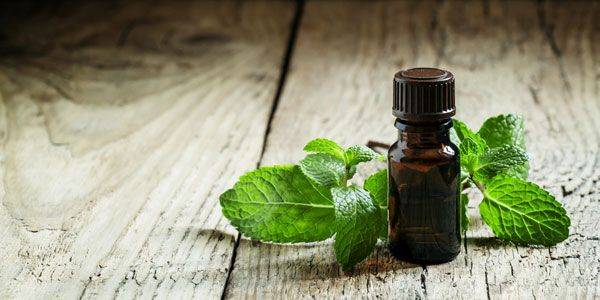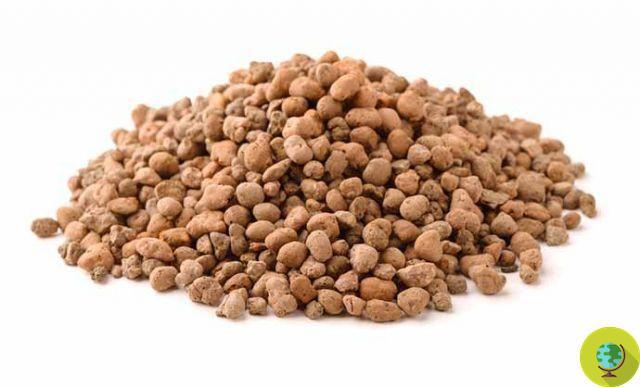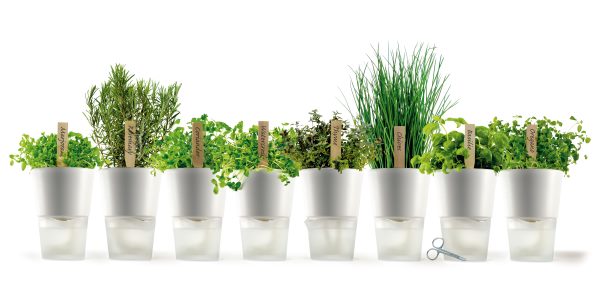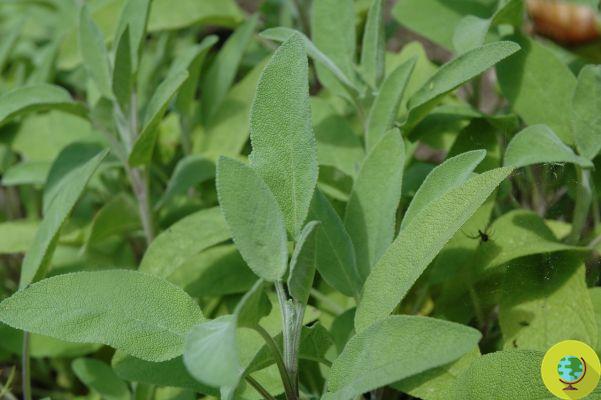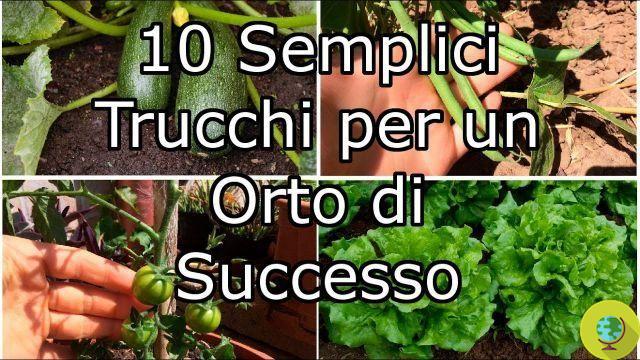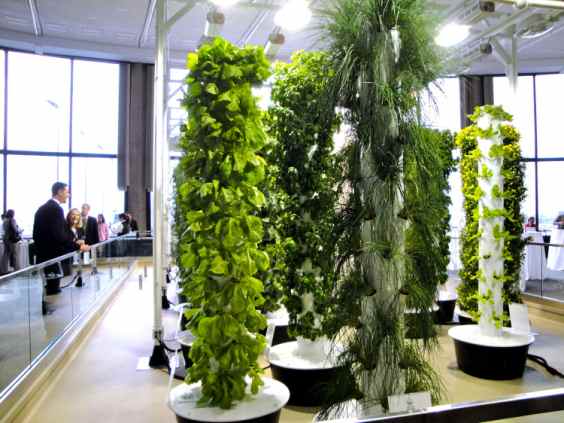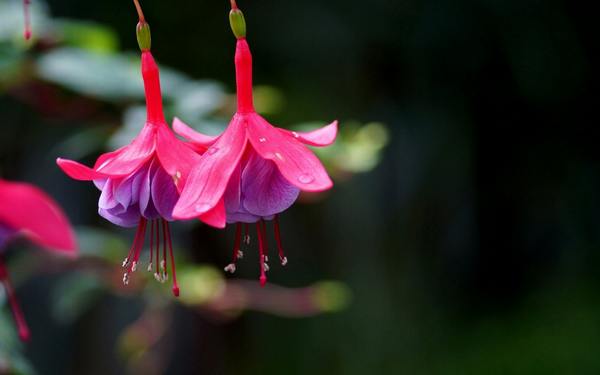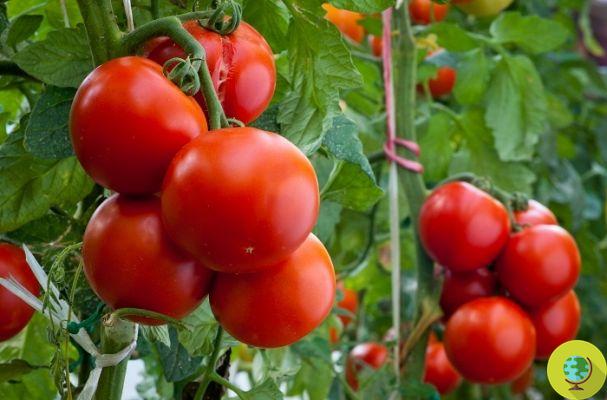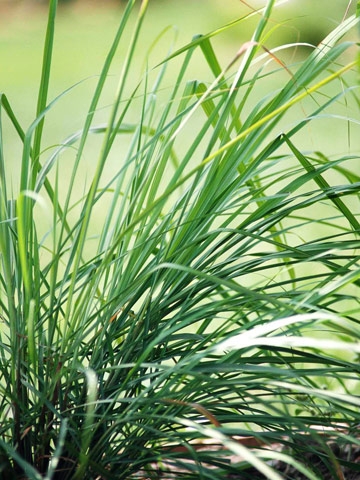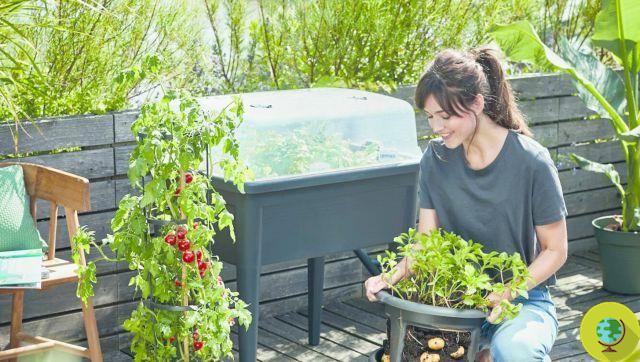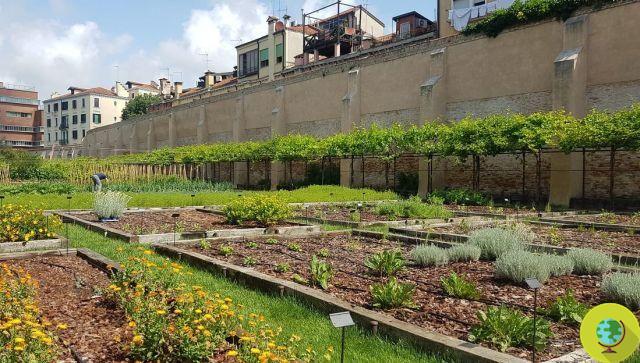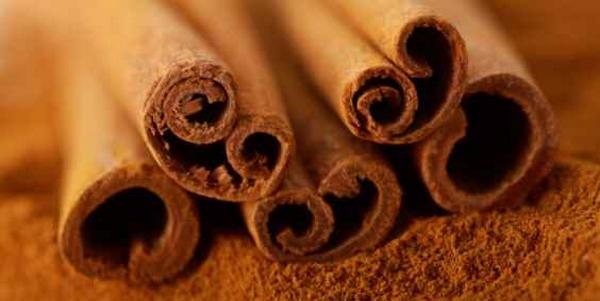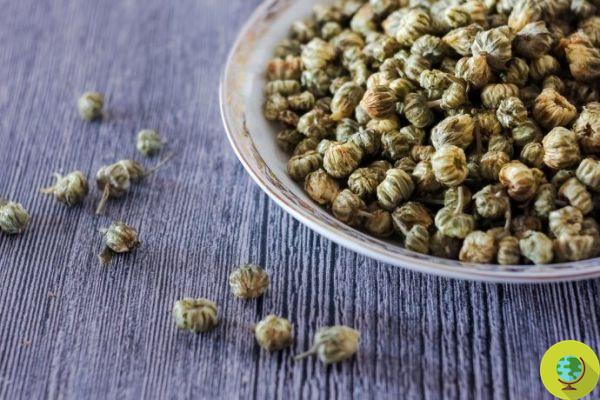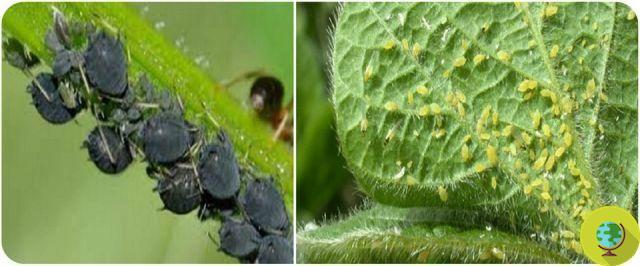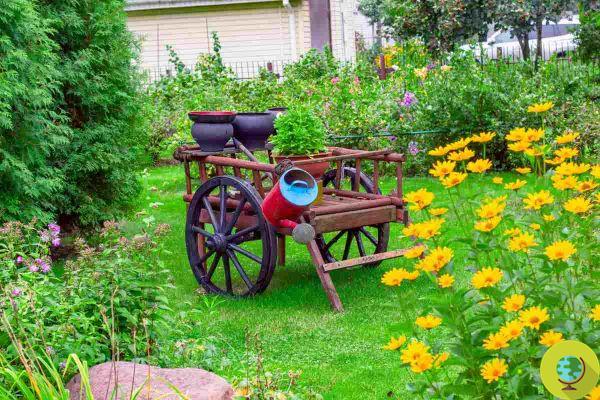Thyme, an aromatic herb with many properties and excellent in the kitchen to make different types of dishes tastier. Let's find out all the benefits and how to best use it.
He is about to end up run over, his mother saves himTimo, an aromatic herb with many properties and excellent in the kitchen to make different types of dishes tastier. Let's find out all the benefits and how to best use it.
Il thyme we are talking about, not to be confused with the thymus gland, is the plant botanically known with the name of Thymus vulgaris, also known as weed or sermollo. It is a small shrub with green-gray and rather small leaves, dal intense aroma and immediately noticeable, especially by rubbing them between the fingers.
La flowering of thyme occurs between spring and summer, with the appearance of pinkish flowers. The use of thymus is particularly indicated for the treatment of diseases affecting the respiratory tract. There are hundreds of variety of thyme, some of which are characterized by a pleasant lemon aroma.
Index
Thyme, property
Thyme can boast an unexpected vitamin content, both in reference to the Vitamin C and vitamins of group B. It also contains thymol, linin and mineral salts. It's about a medicinal and aromatic plant, which has a essential oil and beneficial substances thanks to which they are attributed to the thyme balsamic properties, anticatarrali ed antiseptics. Among the mineral salts contained in the thyme we find manganese, iron, potassium, calcium and magnesium.
Thyme is also considered a tonic and a stimulant of the digestive system. It is also regarded by alternative medicine as a genuine one natural antibiotic it's a diuretic.
Finally, significant is attributed to the thymus antioxidant propertiesi in protection of cell membranes.
In summary, the thyme is:
- rich in vitamins (especially vitamin C and B vitamins)
- balsamic
- anti-catarrhal
- antiseptic
- natural antibiotic
- diuretic
- stimulates the gastric system
- antioxidant
Thyme, benefits
Its vitamin C content contributes to the body's resistance to infections and to the action of free radicals. This aromatic herb then promotes good digestion and is useful in case of water retention or in all cases in which we want to favor the proper functioning of the lymphatic system.
The use of thyme in one's diet and in the form of a drink obtained by infusion can contribute to the regularization of menstrual flow. A study conducted by Leeds Metropolitan University indicated thymus as a possible beneficial remedy in the treatment ofacne.
Summarizing the thyme:
- stimulates the immune system
- counteracts free radicals
- promotes digestion
- helps in case of water retention
- promotes the proper functioning of the lymphatic system
- regulates the menstrual cycle
- helps in acne

Thyme, nutritional values
Thyme contains above all carbohydrates it's a good dose of fiber. There are also proteins, fats and sugars in small quantities. The sodium content should not be underestimated:
- G carbohydrates 63,94
- Fiber 37 g
- 9,11 g protein
- 7,43 g fat
- Sugars 1,71 g
- Sodium 55 mg
Thyme, calories
100 grams of dried thyme they bring to our body circa 276 kcal. It may seem like a lot but obviously this aromatic herb is usually consumed in small doses and therefore does not affect the total calories of the dishes in which we use it.
Thyme, you use
From the point of view of natural health care, thyme is mainly used in the form of syrup and infusion, to be used in case of respiratory tract diseases, coughs and colds. Thyme essential oil can be used in case of stuffy nose to carry out fumigations with boiling water, in order to help decongest and free the respiratory tract.
THEinfusion of thyme it is particularly suitable for solving problems of intestinal swelling and aerophagia due to poor digestion. The thyme infusion is also used in the preparation of a natural mouthwash suitable for rinsing and gargling, to be carried out in case of bad breath or sore throat. Thyme is a disinfectant and natural antibacterial which helps to fight the germs that can cause such ailments. Other uses of the thyme infusion include its use in foot baths, in order to relieve the feeling of tiredness and fatigue that could occur at the end of the day in the lower limbs. The infusion of cold thyme is also an excellent remedy to use as a last rinse in case of weak hair, to reinforce them.
The use of thyme in cooking, as a spice to be used for the seasoning of dishes and for the preparation of soups, allows you to protect your body in a natural way from colds typical of winter and can help stimulate the proper functioning of ours immune system. For the preparation of infusions or decoctions based on thyme they are usually used 5 grams of the same for every 100 grams of water.
In the kitchen, adding thyme during cooking or as a condiment for i vegetable can help facilitate digestion of the same and to allow that intestinal swelling problems do not appear. A jar of thyme placed on the windowsill, on the balcony or in the kitchen allows you to naturally ward off insects.
To recap thyme in the form of syrup or infusion can be used for:
- cough
- cold
- stuffy nose
- intestinal swelling
- mouthwash
- tired feet
- weak hair
- stimulate the immune system
Thyme essential oil
Thyme essential oil is widely used and appreciated above all thanks to its antibacterial and antiviral power. There are two variants: that red, stronger, and that White, more delicate. In the most typical period for flu and colds, it is enough to spread a few drops of thyme at home (1a for each square meter of room) to purify the air avoiding contagion. Can also be used for doing fumenti in case of colds, sinusitis, sore throat, etc. or for breast massages with balsamic power. In this case, 2-3 drops of thyme essential oil are needed (but eucalyptus can also be used) diluted in a tablespoon of sweet almond oil or other vegetable oil.
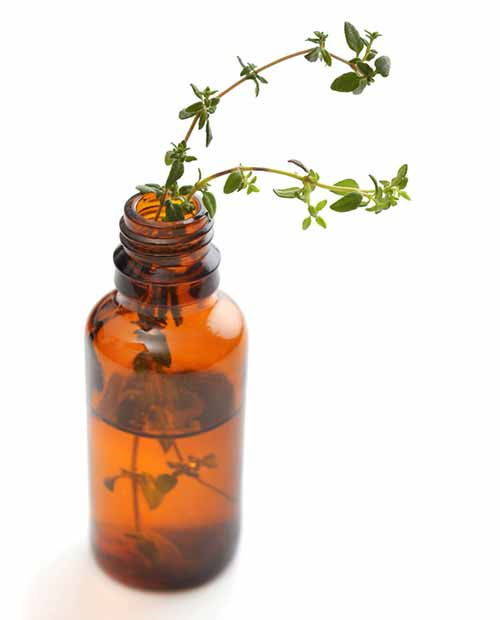
With diluted thyme essential oil they can also be done massages against rheumatic pains or to stimulate the microcirculation.
Infusion of thyme
An infusion can be prepared very simply and quickly with thyme. It is necessary 1 teaspoon of dried and chopped leaves per 250 ml of water. Bring the water to a boil then add the thyme, turn off and leave to rest covered for about 10-15 minutes. After filtering, you can drink it adding maybe a teaspoon of honey or use it for external use to disinfect wounds and sores or to gargle against sore throats and coughs.
Thyme, recipes and combinations
Thyme lends itself very well in cooking to flavor different dishes: it can be used in the preparation of soups, soups, velvety but it can also give that extra flavor to burgers and vegetable meatballs, omelettes or farifrittate. Excellent then thepairing with legumes especially the beans which also helps to make them more digestible.
It goes well with fish or meat dishes or vegetables such as carrots, squash, potatoes, tomatoes, peppers, onions, aubergines and mushrooms. There are those who also add it to the fresh fruit!
Thyme borage pancakes
Together with borage, thyme is the real protagonist of this spring recipe. Find all the details here.
Thyme flavored oil
With thyme you can easily prepare a flavored oil to use to flavor your favorite dishes. You can choose to use only thyme or combine it with other herbs, for example sage, basil or tarragon. Here the complete recipe.
How to grow thyme
Thyme, which belongs to the labiate family - the same as marjoram - is a hardy shrub that can be grown as a multi-year aromatic plant. Its cultivation can take place starting from seeds or by cutting. There sowing of thyme can take place in seedbeds from the beginning of spring until the month of June.
The transplantation of the thyme from the seedbed to the pot can take place about two months after sowing. During the summer, the thyme plant may require rather abundant watering. Immediately after sowing, cover the seeds with a light layer of soil and proceed with the first watering. Yup recommends di make the cutting in late spring or in August, starting from resistant plants aged between two and four years, taking portions of 7-10 centimeters.
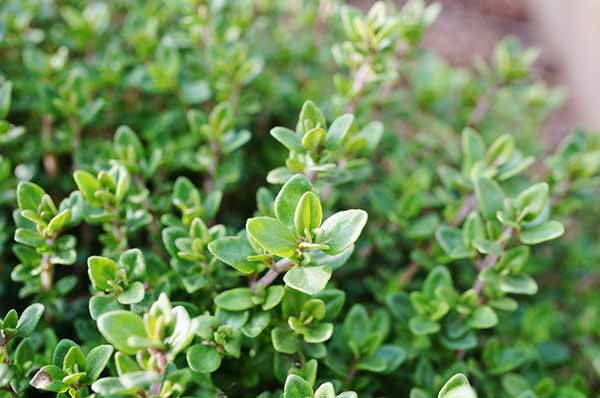
La collection of thyme it takes place from spring to the end of summer, approximately from May to August. The aerial part of the plant is used in particular, with reference therefore to both the flowers and the leaves. Fresh thyme can be stored in the refrigerator in a perforated container for about five to six days. Thyme drying should be done in the shade. The dried thyme must be preserved in a cool, dry and protected from light in airtight jars, preferably in glass. Its characteristics will remain intact for a period of between four and six months.
Thyme, contraindications
Food use in small doses of thyme has no contraindications. On the other hand, the situation is different if you use the thymus curative in the form of syrup and especially essential oil. In this case the remedy is not recommended during pregnancy and breastfeeding but also for small children as it is a very concentrated and potentially irritating or allergenic substance. It should never be used pure and internally. Such excessive doses can cause rashes, hives and if taken in the form of syrup also nausea, vomiting or abdominal pain.
Not recommended the use of thyme a those suffering from hypothyroidism. If you take medications then it is better to always ask your doctor for advice.
To discover the properties of other aromatic herbs see also:
- OREGANO: properties AND HEALTH BENEFITS
- SAGE: BENEFIT PROPERTIES AND USES
- BASIL: PROPERTIES, USES AND HOW TO GROW IT
- ROSEMARY: PROPERTIES, USES AND HOW TO STORE IT
- MAJORANA: properties, BENEFITS; USES AND CONTRAINDICATIONS
- PARSLEY: PROPERTIES, USES AND CONTRAINDICATIONS
- MINT: properties, BENEFITS AND USES
- LAUREL: ALL PROPERTIES, USES AND BENEFITS
Curiosities about thyme
Thyme has always been used in ancient civilizations and appreciated above all for its antibacterial properties. The Egyptians, for example, they used it not only to burn at home or for food storage but also for the embalming of the dead. It seems that the Roman soldiersinstead, they did a bath in thyme water before starting a battle while the Greeks used it in the form of oil to give massages that instilled courage (the word thyme derives from an ancient Greek term which meant courage).
Also Charlemagne he used and appreciated thyme, in his edict he even ordered its cultivation in the gardens of medicinal plants of his empire while in the Middle Ages the ladies gave away bunches of thyme or embroidered shawls or signs with this aromatic plant and gave them to those who were leaving for the war as luck symbol.
Marta Albè




